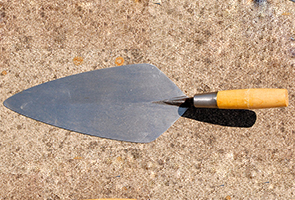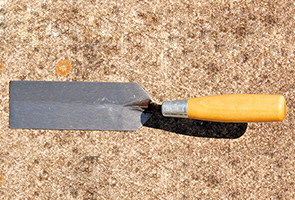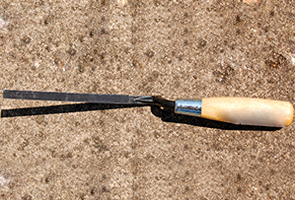Grip size. The trowel handle's grip size should match or be close to your grip size.
Length. A handle that extends beyond the end of your palm will reduce injuries and discomfort caused by the handle cutting into the base of your palm.
Handle shape. Tapered handles, such as those commonly found on brick trowels, have a varied grip size, which may increase comfort and allow for a pinch grip for doing more exact work.
Trowel size & weight. A trowel's size makes a big difference in working weight. Larger sizes are heavier because of their size and the fact that they can hold more mortar and other materials. But a larger size does not always mean greater productivity. Some craft workers may be able to work more productively with a larger trowel, while others may be more productive with a smaller trowel since a smaller length and width reduces the amount of effort over time. Less hand and wrist fatigue means you can work at a steadier pace, for a longer period of time, and with a lower risk for injury. So even with larger hands, the biggest size trowel may not be the best choice.
Handle/work angle. A handle angle that keeps your wrist straight for the job you are working on will reduce hand and wrist fatigue and risk of injury. Changing the staging height of your work to keep it at an optimal height – between knees and shoulders– can help to keep work at a fairly even angle and help prevent hand as well as back and shoulder injuries. If that is not an option, you may want to change to a different angle tool for work at higher levels.
Material. Trowel handles are available in different materials, such as wood, leather, and synthetic non-slip and cushion grips. Softer handle materials, such as leather, take less work to hold and can help to reduce vibration and cold. But leather may absorb sweat, which can make the trowel heavier and more difficult to manipulate or 'spin.' Select a material that matches how you use the handle when performing your work. If a steady grip is needed, using a handle with a non-slip grip or adding anti-slip materials may help.




